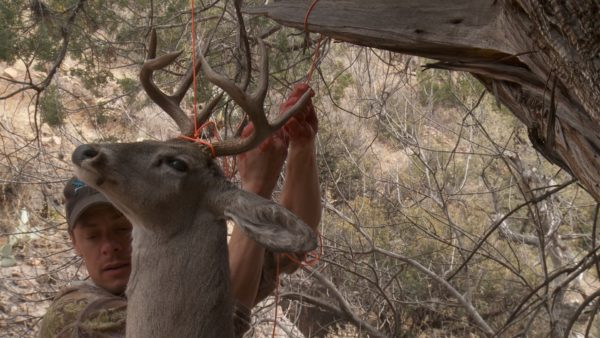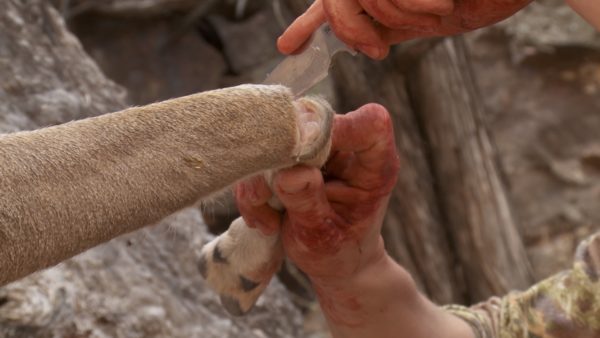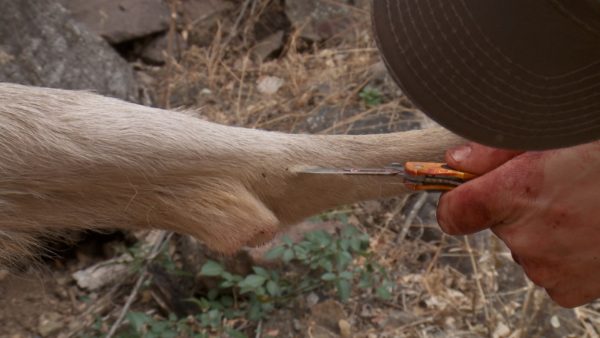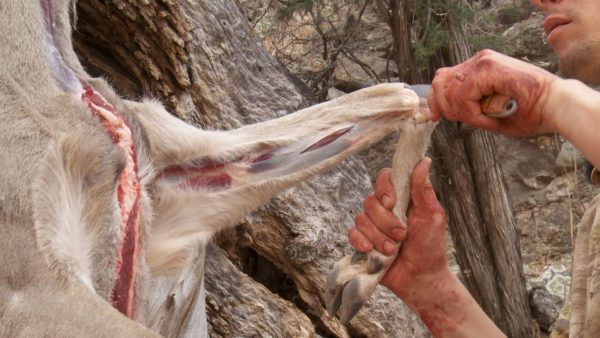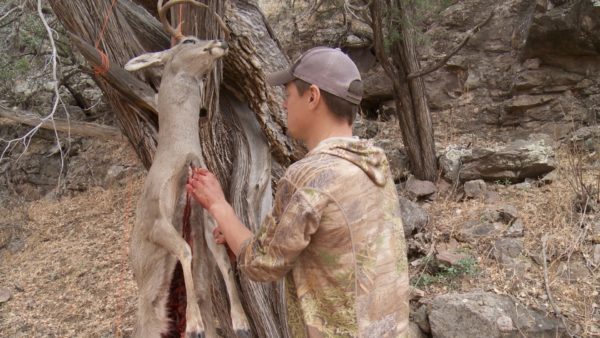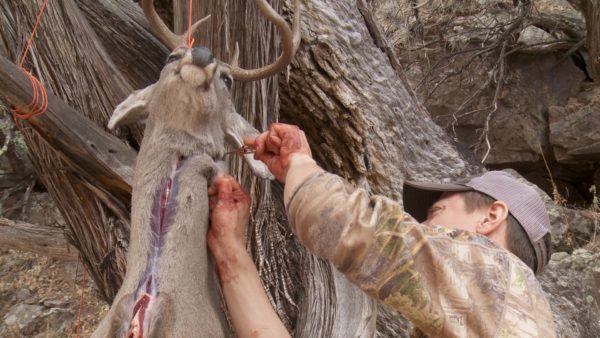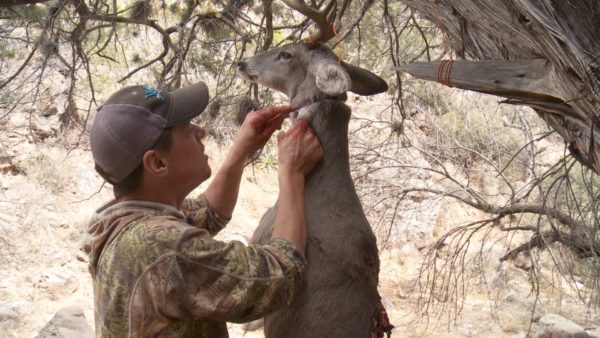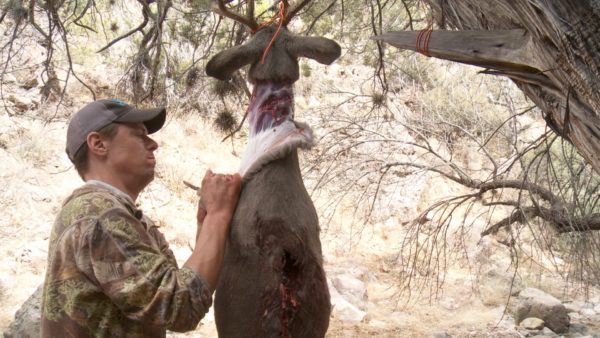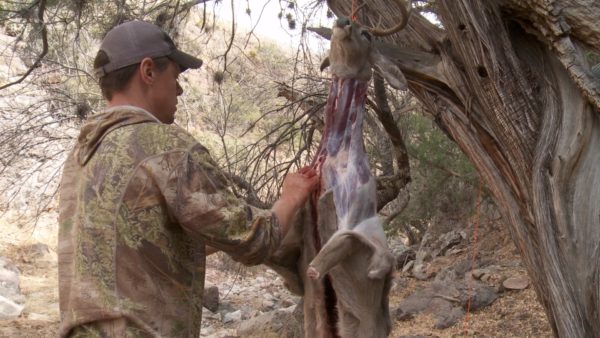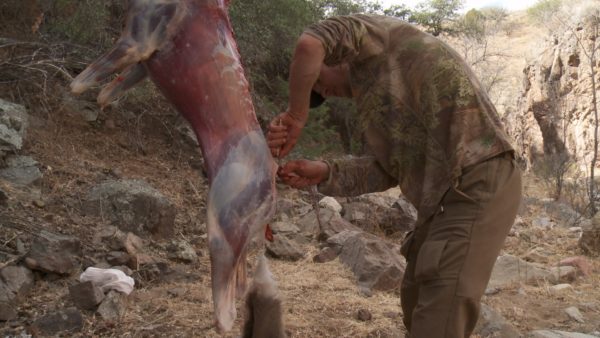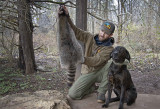Popular searches
Articles
Series
Topics
Shop
Recipes
As long as you’ve got a place to hang it and the muscle-power necessary to lift it, the hanging method is a clean and simple way to skin your big game animals. Unless you’re saving the cape or hide for taxidermy purposes, use the following procedure.
- Hang the animal by the neck or the base of the antlers, with the noose tucked up tightly behind the ears. You can also hang an animal upside down, by the gambrels. Everything is pretty much the same, it’s just a matter of personal preference.
- Make your skinning cuts. Start by cutting through the hide around each ankle. (Some hunters prefer to remove the feet at the ankles for ease of handling; if so, do it at this point. You can use a bone saw for this, though a knife is perfectly adequate once you learn how to find the proper joint and sever the tendon; this skill comes from practice and experimentation.) Then, on each leg, run an incision through the hide that starts at the ankle and follows the inside of the leg all the way until it joins the gutting incision.
- Extend the gutting incision from the sternum all the way up to the base of the chin. Then cut through the hide all the way around the animal’s neck, passing just behind the base of the skull.
- Start at the cut around the neck and begin skinning the hide away from the meat as you work downward. Once you’ve exposed the meat of the neck, you should have enough hide to get a good grip. Pull with one hand, slice with the other.
- Pull the hide free of the front legs and continue working downward. By pulling outward on the hide with one hand and punching downward to free it from the connective tissues, this part of the job should require very little knife work.
- Work the hide free of the the back legs. Then sever the tail bone at its base and, with a few more tugs, the hide should fall away to the ground.
- You can now remove the legs, backstraps, tenderloins, ribs, and neck meat either in the hanging position or by working on a flat surface. Either way, the process is nearly the same.
Sign In or Create a Free Account
Access the newest seasons of MeatEater, save content, and join in discussions with the Crew and others in the MeatEater community.

